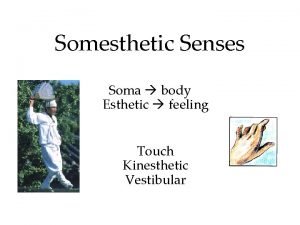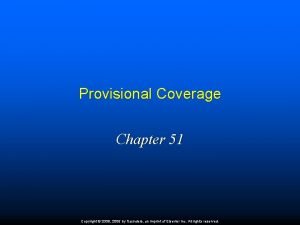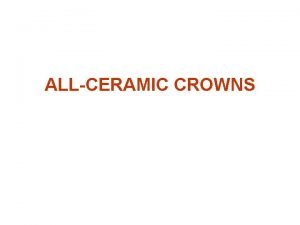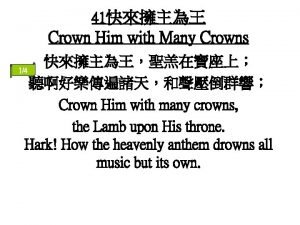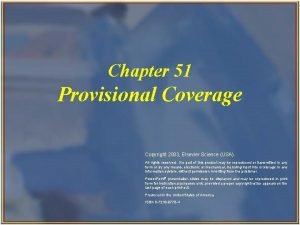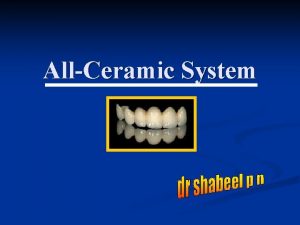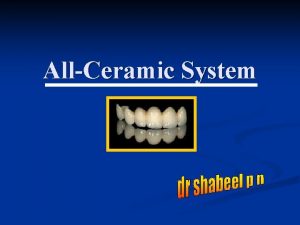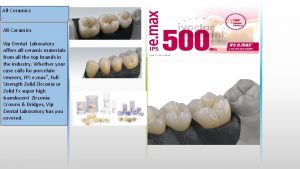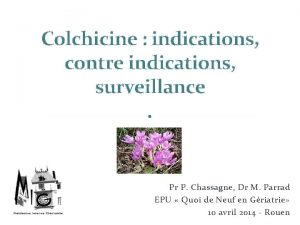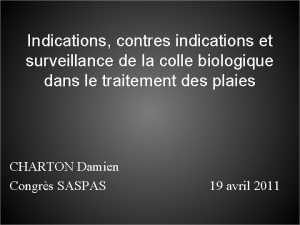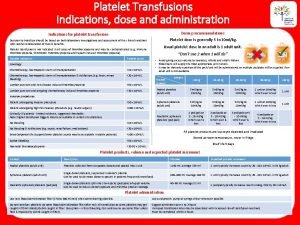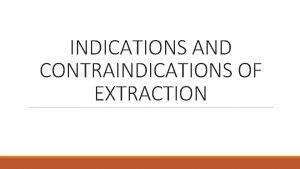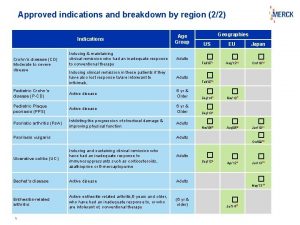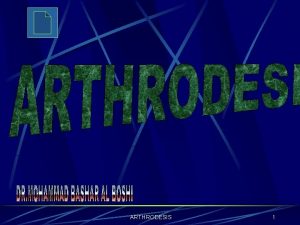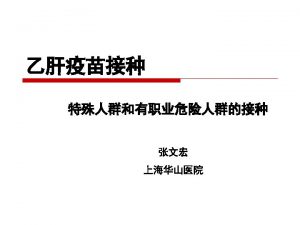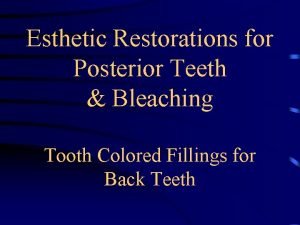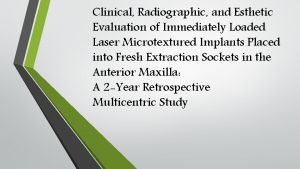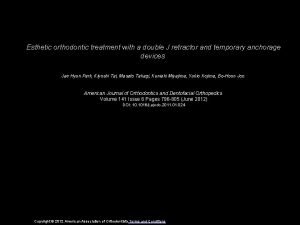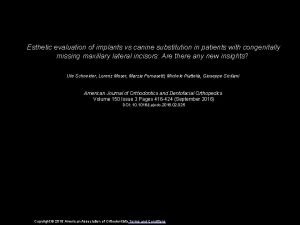ALLCERAMIC CROWNS Indications When high esthetic requirement is



















- Slides: 19

ALL-CERAMIC CROWNS

Indications • When high esthetic requirement is considered and no other conservative restoration is indicated. • Considerable proximal or facial caries that can no longer be restored by composite resin. • In case of intact incisal edge • Favourable distribution of occlusal load

• For fractured anterior teeth not involving more than 1/3 rd of inciso gingival length. • Discoloured anterior teeth due to trauma or root canal treatment. • Malformed teeth due to developmental defects. • Malposed or rotated teeth.

Contraindications • • • When superior strength is warranted and metalceramic crown is more appropriate. Significant caries with insufficient coronal tooth structure for support. Short clinical crowns. Thin teeth faciolingually or constricted circumference. Unfavourable distribution of occlusal load. eg: - edge to edge bite relationship deep bite cases In young patients with large vital pulp.

• Individuals involved in sports or rigorous occupations where there are high risks of fractures. • Individuals having bad habits like BRUXISM. • Patients with periodontal surgery or cervical erosion.

Advantages • • • Excellent esthetics Good tissue response even for subgingival margins. Slightly more conservative of facial wall than metal ceramic Restores functions and gives maximum retention. High color stability and low conductivity. Can be used as single restoration only.

Disadvantages: • • • Reduced strength compared to metal ceramic crown. Proper preparation extremely critical Among least conservative preparations Brittle nature of material Wear has been noticed on functional surfaces of natural teeth that oppose porcelain restorations.

ARMAMENTARIUM FOR TOOTH PREPARATION • ROUND END TAPERED DIAMOND STONE(0. 8 mm) • FLAT END TAPERED DIAMOND STONE (1 mm) • WHEEL OR FOOT BALL DIAMOND STONE • FINISHING STONES AND CARBIDE BURS • BINANGLE CHISEL


Depth orientation grooves bur

PORCELAIN JACKET CROWN PREPARATION • Depth orientation grooves: A flat end tapered diamond is first aligned with the incisal portion of the facial surface and two vertical cuts are made to the full diameter of the diamond, fading out at the “break” where the curvature of the facial surface is the greatest. Three similar grooves are made maintaining the same instrument parallel to the gingival segment of the facial surface. Two incisal orientation grooves 2. 0 mm deep are made.

• Facial reduction, incisal half: A flat end tapered diamond is used to remove the tooth structure remaining between the orientation groove in the incisal portion of the facial surface.

• Facial reduction, gingival half: A flat end tapered diamond is used to reduce the gingival segment and extend well into the proximal surface. Extend the facial reduction through the proximal surfaces with the flat end tapered diamond producing a shoulder in the process.

• Lingual reduction: A small round diamond with a head 1. 4 mm in diameter is used to make four depth orientation cuts. A small round wheel diamond is used to create a concave surface over the lingual surface of the tooth incisal to the cingulum.

• Lingual axial reduction: A flat end tapered diamond is employed for axial reduction to prepare the vertical lingual wall. Blend the reduction of each axial surface with that on the adjacent axial surface.

Axial finishing: No: 171 bur(carbide) is used to smooth the axial surfaces and to round all distinct positive angles on the preparation.

• Shoulder finishing: No: 957 bur(end cutting bur) is used for preparing a smoothly cut shoulder perpendicular to the line of force or to the long axis of the tooth.

The features of all ceramic crowns preparation for a porcelain jacket crown on an anterior tooth and the function served by each.

List of burs • • • TF-13 Incisal and facial reduction TC-11 proximal reduction Foot ball – FO 25 2 mm round bur Finishing TF-13 EF
 Somesthetic sensation meaning
Somesthetic sensation meaning Contoh user requirement dan system requirement
Contoh user requirement dan system requirement Provisional coverage insurance
Provisional coverage insurance Contraindications of all ceramic crowns
Contraindications of all ceramic crowns High and lifted up jesus son of god
High and lifted up jesus son of god Crown him
Crown him East to west casting crowns
East to west casting crowns Crown him with many crowns 中文
Crown him with many crowns 中文 Casting crowns who am i
Casting crowns who am i What is the purpose of provisional coverage
What is the purpose of provisional coverage Who painted
Who painted Seven eighth crown
Seven eighth crown Casting crowns dying he saved me
Casting crowns dying he saved me Casting crowns i will praise you in the storm
Casting crowns i will praise you in the storm Crown him with many crowns 中文
Crown him with many crowns 中文 Language and processors for requirement
Language and processors for requirement Act 520 cidb
Act 520 cidb The gross material requirements plan combines
The gross material requirements plan combines Requirement determination
Requirement determination Maximum material limit of shaft is
Maximum material limit of shaft is
